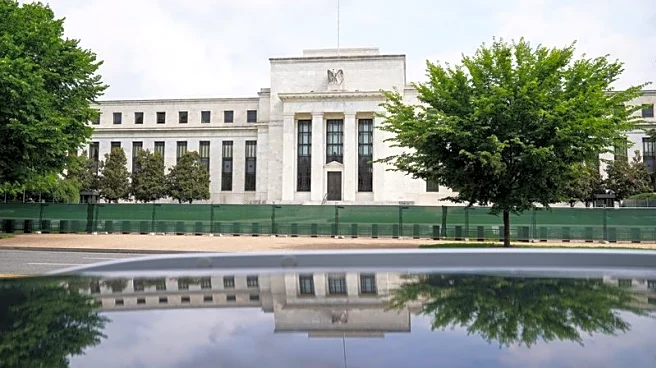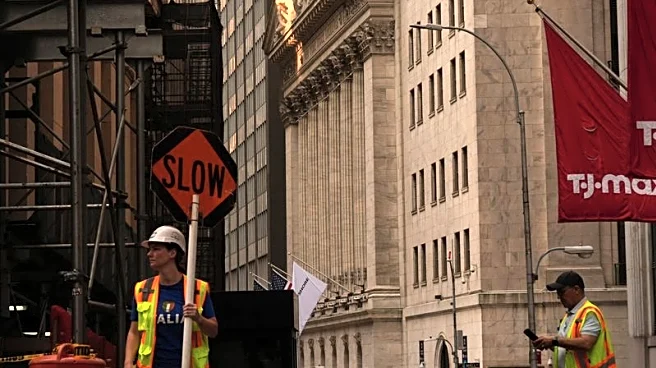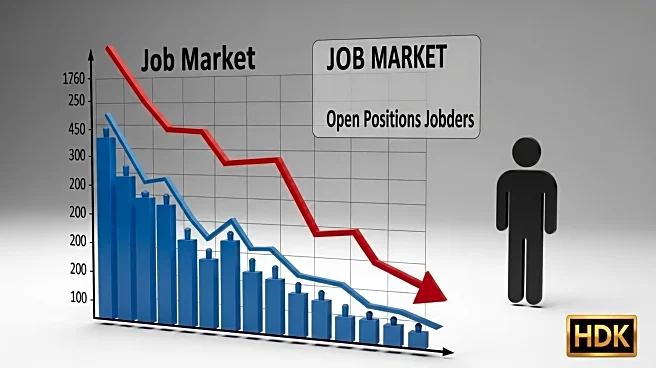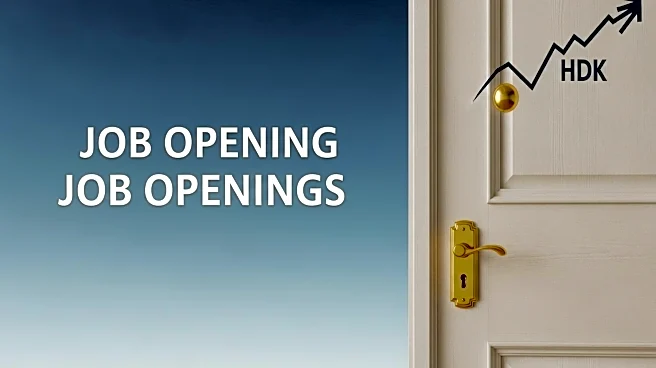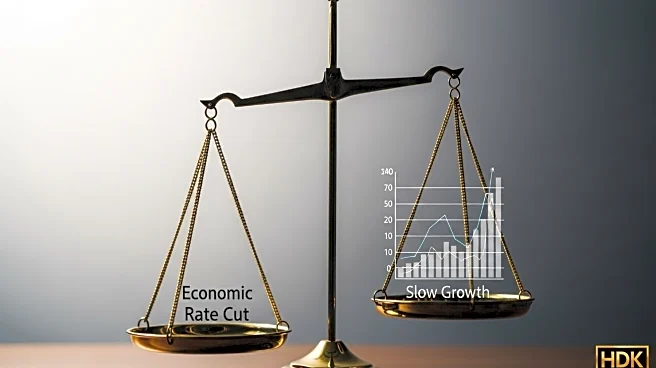What is the story about?
What's Happening?
Economists are closely watching the upcoming August jobs report, which is expected to show modest job growth with an addition of 75,000 jobs. This follows a trend of low hiring and firing rates, with the unemployment rate anticipated to rise slightly to 4.3%. The report comes at a critical time, as the Federal Reserve considers cutting interest rates to stimulate the job market and prevent rising unemployment. The July report had previously caused concern with downward revisions to job growth estimates, highlighting the impact of President Trump's tariffs on hiring and the overall economy.
Why It's Important?
The August jobs report is pivotal for economic policy, as it may influence the Federal Reserve's decision on interest rates. A lower rate could reduce borrowing costs, potentially boosting job growth and mitigating unemployment risks. The report also sheds light on the effects of tariffs and immigration policies on the labor market, providing insights into broader economic challenges. The reliability of government data is under scrutiny, following the firing of the BLS director after the July report, raising questions about data integrity and its impact on policy decisions.
What's Next?
The Federal Reserve's upcoming policy committee meeting in September will likely consider the August jobs report in its rate decision. If job growth remains slow, a rate cut may be implemented to support the labor market. Economists and policymakers will continue to monitor private sector reports for additional insights into employment trends. The outcome of these analyses could shape future economic strategies and influence public confidence in government data.
AI Generated Content
Do you find this article useful?


